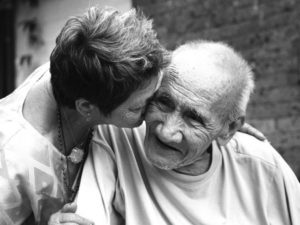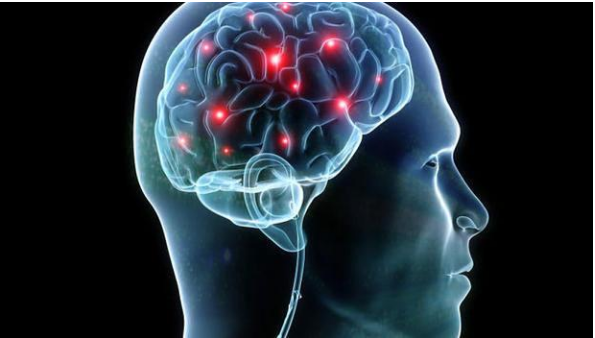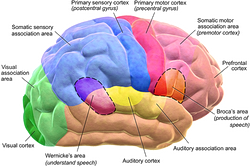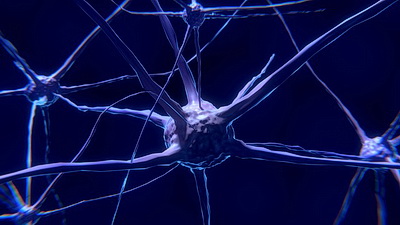 Alzheimer’s disease is an aggressive neurological disorder that slowly breaks down brain cells and inhibits bodily function. The main problem materializes when a person starts to forget things as their brain cells gradually die.
Alzheimer’s disease is an aggressive neurological disorder that slowly breaks down brain cells and inhibits bodily function. The main problem materializes when a person starts to forget things as their brain cells gradually die.
For loved ones, it can be very difficult to see how Alzheimer’s is takes away the independence of the person who has acquired it. It can also get frustrating, especially when the individual is unable to communicate their wants and needs. There are a lot of myths about Alzheimer’s, so we are going to provide the proper procedures to follow as if you find yourself in a position to assist someone who has acquired this debilitating disease.
Read Up about It
A good way to help is by doing your research regarding Alzheimer’s disease. This can allow you to understand what you should expect and how you can prepare. In many cases, there are common misconceptions about the condition as well that might mar your plans. Always do your research and ensure that you are educated about the condition. This will mean that as your loved one’s condition worsens, you can still do all in your means to make them comfortable.
Similarly, not all forms of Alzheimer’s cause dementia. Dementia only occurs when Alzheimer’s has progressed to a serious stage. The main goal here for you is to understand the condition so that you can offer better support to your loved ones. If you don’t understand it, you cannot help them in a greater capacity, as they need.
-
Healthy Exercises
Just because someone has Alzheimer’s does not mean that they have to stop doing the activities that they’ve enjoyed. In fact, it is actually encouraged that they indulge in activities that can keep their brain healthier for longer time. From gardening and yard work yoga, jogging, swimming or walking the dog can improve their mood as well as allow them to keep their cognitive thought processes working.
Remember to offer them healthy snacks and water when they are exercising. Also, continue to encourage and interact with them. Whenever possible, allow them to maintain their independence. Alzheimer’s can cause a person to rely heavily on a caretaker. Until that moment, allow them to retain their activities without your assistance. Be careful in some cases though, such as cooking or other activities where a danger may exist. Accidents can occur if the person forgets they are chopping vegetables or they put something in the oven and then forgot about it.
-
Have Realistic Expectations
Alzheimer’s can make a person rather moody and prone to mood swings so you should expect the unexpected. Keep in mind that these patients can fluctuate between good days and bad days. The good days might make you hopeful but things can definitely take a wrong turn with ease. For this reason, be realistic and take each moment as it comes. Also, keep in mind that the good days are not a sign that the disease is diminishing.
As a degenerative condition, there are treatments available that can slow down the disease but there is no ultimate cure. If your loved one is taking medication for Alzheimer’s, understand that it won’t fix the condition; the medication will just allow them to enjoy their quality of life for longer. It also allows them to adjust to the condition. By understanding and accepting this factor, you can make sure that you have realistic expectations of how the condition will progress.
-
A Predictable Schedule and Routine
One of the major problems with Alzheimer’s is that it can cause confusion on a daily basis. By having a schedule and a routine that is predictable, you can make an Alzheimer’s patient’s life easier. Have meals consistently at the same time; schedule their bathroom breaks, their activities and bedtime. It might feel like looking after a toddler but it allows your loved one to have a set routine that they will not forget so easily.
The routine and monotony of daily life will also allow them to easily handle much of the anxiety and confusion that comes as their condition progresses. Remember to be patient and avoid deviating from the routine as much as possible. Any unexpected changes can trigger anxiety as they are not expecting the change. Moreover, without a consistent routine, it can be difficult for them to remember what they did during the day.
-
Don’t Argue
As they lose their memory, your loved ones will often forget something. They might often believe that they are living in the past or have forgotten that someone has passed away. Never try to argue with them because their failing memory means that they cannot remember what has actually happened. The best thing to do is to gently steer the conversation towards the truth.
If they still insist on something, tell them the truth firmly but avoid arguing. Getting angry for forgetting something will only add to their confusion which in turn, will end up making them angry at their inability to remember. Moreover, as the condition progresses, they will forget so you can’t fault them on this aspect.
-
Emotional Bonds
When a person has Alzheimer’s they can slowly lose their vocabulary as well as their ability to write. They might also forget what certain objects are called and will come up with words for them. An apple could become a red ball. It is very important to read between the lines. When someone with Alzheimer talks to you, you need to listen with your eyes, ears and your heart.
In many cases, the person might not remember an event but they still remember the emotions they felt. Capitalize on this aspect by developing and improving your emotional bonds with them. Listen to music, read out loud to them and try to paint. Moreover, always remember to hug them and let them know they are loved by your actions and your words.

 Ah, the beauty of exercise! What can one say but only good things about this natural, physical full-body enhancement?
Ah, the beauty of exercise! What can one say but only good things about this natural, physical full-body enhancement?






